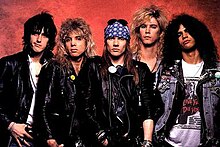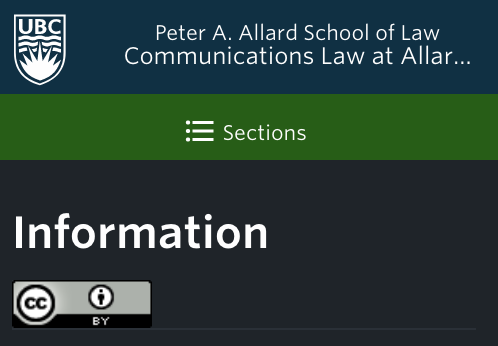Have you ever wondered what the legal implications are for a band and its individual members when they decide to split up? How do we know which band members own authorship and performance rights to the songs? The answer may or may not be as straightforward as you initially think.
During the creation process a band invariably work with each other and producers to record the music and later perform the music live. The two most relevant pieces of copyright from a band’s perspective include authorship of the music and reproduction rights of the song. The reproduction rights typically belong to the label responsible for the production and recording of the music, although we have obviously seen a plethora of success stories of artists recording their own authored work and successfully publishing their work on social media.
This piece to focused primarily on authorship copyright, more specifically joint authorship.
If you look up your favourite bands on the internet you will invariably come across some sites which reveal the bands song-writing credits. You may be surprised to find out that song-writing credits between members tend to vary widely from 1 band member to sometimes 2 members, to all 4 or 5 band members, whatever the case may be. If co-authored, the actual percentage of song-writing credit attributed to each author requires a little bit more digging.
Which brings me to the main question which primarily inspired this piece. In a situation where a band member or any contributing author alleges joint-authorship and there is disagreement on whether a joint-authorship exists, how is this proven?
The short answer is what does the contract say. No contract? No worries. We have cases for that, including a big Canadian case! Yay!
But first let’s go over the basics..
In order to obtain copyright protection of a work (a song in our case), s. 5 of the Copyright Act requires that the work be original. In CCH[1] we learn that originality entails the use of skill and judgement or in other words, creativity. Further as we learn in the Kenrick[2] case, the original work must be expressed in a tangible form. A mere idea will not suffice for the purpose of gaining copyright protection.
Okay. Now back to question on how to prove that joint-authorship exists? For the splitting band members, the answer to this question will determine whether they have derivative rights pursuant to s. 3 of the Copyright Act[3]. The “bundle of rights” that go to the copyright holder, include rights that are perhaps most relevant to the fans of the band, which in my mind are the performance rights.
Take for example the band, Guns n’ Roses (pictured below), who wrote a long list of iconic rock songs in the late 80s and early 90s, including the defining hit single, Sweet Child O’ Mine.

Although the band never formally split, the lead guitarist of the band, Slash (pictured far right), left the band in 1996[4] and the band stopped performing together soon thereafter. Following his departure, Slash continued to perform many of Guns and Roses songs (including Sweet Child O’ Mine), “featuring” different lead singers[5].
During the creative process Guns in Roses employed a rather democratic approach to attributing song-writing credits, with many of their songs credited to all the band members at the time of creation[6]. With with the whole band sharing the credit, any band member that split was entitled to perform the song on their own. I would say most bands do not employ this approach, with writing credits usually going to a combination of the lead singer and the lead guitar player. Of course, I am sure you could think of quite a few exceptions.
Sweet Child O’ Mine was written by the whole band, including:
Steven Adler (drummer), Duff McKagan (bass player), Izzy Stradlin (rhythm guitar), Axl Rose (lead singer) and Slash (lead guitar).
Here is a glimpse into how the collaboration took place according to Wikipedia[7]:
“During a jam session at the band’s house in the Sunset Strip, drummer Steven Adler and Slash were warming up and Slash began to play a “circus” melody while making faces at Adler. Rhythm guitarist Izzy Stradlin asked Slash to play it again. Stradlin came up with some chords, Duff McKagan created a bassline and Adler planned a beat. In his autobiography, Slash said “within an hour my guitar exercise had become something else”. Lead singer Axl Rose was listening to the musicians upstairs in his room and was inspired to write lyrics, which he completed by the following afternoon. He based it on his girlfriend Erin Everly and declared that Lynyrd Skynyrd served as an inspiration “to make sure that we’d got that heartfelt feeling”. On the next composing session in Burbank, the band added a bridge and a guitar solo.”
Which takes us to the Canadian law on joint authorship.
Collaboration between non-band members could lead to add additional legal hurdles without a contract in place, as illustrated by the case between Paul Neudorf, drummer for 54-40 and singer, Sarah McLachlan in Neudorf v. Nettwerk Productions Ltd. et al.[8]
In Neudorf the Supreme Court of BC set out and applied the test of joint authorship, while sending an emphatic message to all record companies and IP lawyers alike, to “get it in the contract”. Neudorf was invited to fly out to Vancouver by McLachlan’s record company, Nettwerk Productions, to work with McLachlan on her “Touch[9]” record. It was during this period that Neudorf claimed to have co-written 4 songs on the Touch album.
Justice Cohen summarized the test for joint authorship as follows:
- Did the plaintiff contribute significant original expression to the songs? If yes then:
- Did each of the plaintiffs and Ms. McLachlan intend that their contributions be merged into a unitary whole? If yes:
- Did each of the plaintiffs and Ms. McLachlan intend the other to be joint author of the songs?
Justice Cohen ultimately ruled that Neudorf only contributed original expression on of the 1 of 4 songs he claimed to co-author, specifically the song “Steamy” in which he contributed to the verse vocal melody. Further it was held that vocal melody was merged into the song and that there was shared intent between the parties to merge Neudorf’s contribution into the song. However, Justice Cohen ruled that Neudorf failed in proving that McLachlan intended him to be a joint author. He found that McLachlan never thought she was writing songs with the plaintiff. Furthermore, Justice Cohen observed that there was no evidence of any conversations between McLachlan and Neudorf during the Touch project about splitting song-writing credits for the songs.
In putting things into context, Sarah McLachlan was a solo artist and no doubt the “showcase” talent for the record company. Neudorf sort of found himself in that “no mans land” of contribution. He was found to be more than a musician for hire but less than a creative author for the purpose of joint authorship. In other words, the onus was on Neudorf, a non-bandmate, to show intention of co-authorship with concrete evidence or in other words ensure it is in a contract before committing to the project.
Do you think Neudorf deserved better given he was found to contribute original expression with shared intent with McLachlan to merge it into one of her songs?
[1] CCH Canadian Ltd. V. Law Society of Upper Canada, 2004 SCC 13
[2] Kenrick v. Lawrence (1890) LR 25, QBD 99
[3] Copyright Act, RSC 1985, c. 42, s. 3
[4] According to NME
https://www.nme.com/blogs/nme-blogs/axl-slash-the-long-troubled-history-of-2015s-most-surprising-friendship-13031
[5] Including performance with Myles Kennedy in 2010
[6] According to “Song Facts”
https://www.songfacts.com/songs/guns-n-roses
[7] The Sweet Child O’ Mine Collaboration
https://en.wikipedia.org/wiki/Sweet_Child_o%27_Mine
[8] Neudorf v. Nettwerk Productions Ltd. et al., (1999) 26 BCTC (SC)
[9] Released on October 11, 1998 by Nettwerk/Capitol (Canada) and produced by Greg Reely
 Copyright & Social Media
Copyright & Social Media Communications Law
Communications Law